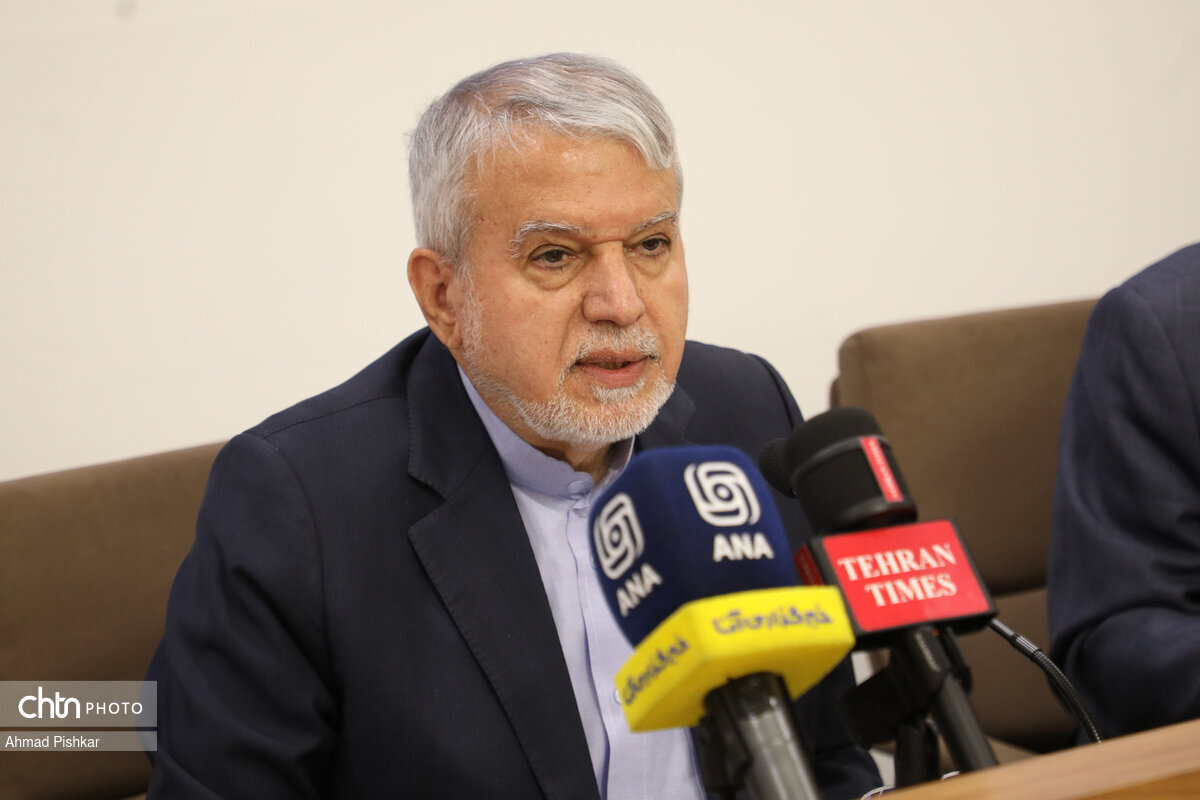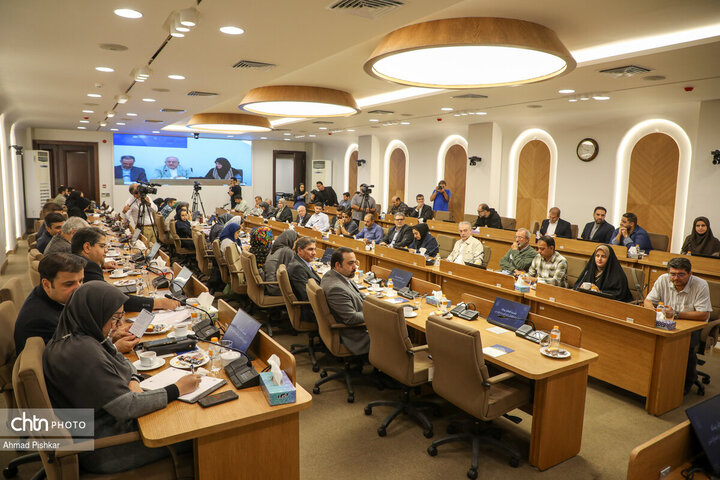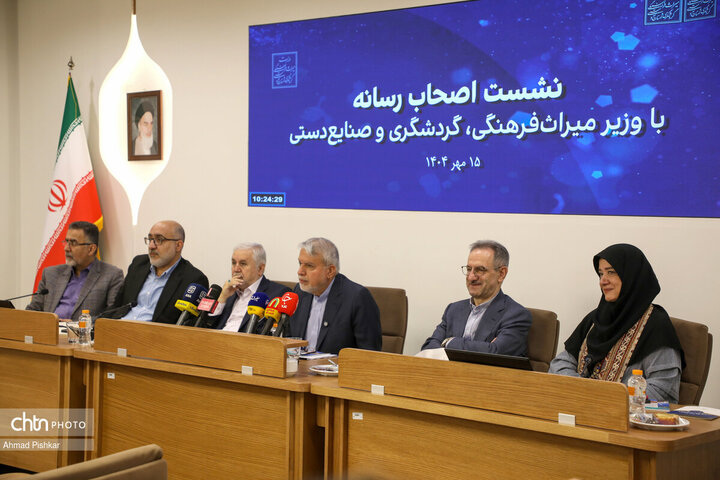Tourism ministry highlights intl. collaboration, domestic restoration efforts

TEHRAN – Iran’s Ministry of Cultural Heritage, Tourism and Handicrafts held a press meeting on Tuesday to outline recent achievements in cultural preservation, international heritage registration, and domestic restoration projects, emphasizing cooperation with Iranians abroad and neighboring countries.
Regarding the “immense” potential of expatriates, Minister of Cultural Heritage, Tourism and Handicrafts, Seyyed Reza Salehi-Amiri, stressed the government’s commitment to strengthening ties with Iranians living abroad.
“One of President Masoud Pezeshkian’s main concerns is enhancing relations with the Iranian diaspora. We have taken significant steps and now aim to utilize their scientific, cultural, and economic capacities,” he said.
Salehi-Amiri highlighted the establishment of a Supreme Council for Iranians Abroad, with specialized commissions active, including the ministry’s responsibility for tourism and Iranian studies. “Our approach is paternal, supportive, and trust-building,” he added, noting efforts to foster a sense of belonging among Iranians worldwide.
He also announced the formation of a special commission in that regard that seeks to help the younger generation of Iranians abroad reconnect with their heritage through opportunities to experience their homeland’s culture.
On the international front, Salehi-Amiri addressed a joint UNESCO file for Masnavi, the poetic work of Rumi. “Turkey initially claimed priority due to older manuscripts and the location of Rumi’s school in Konya,” he said. “UNESCO recommended a joint registration, which we agreed to avoid cultural disputes and benefit from shared heritage,” Salehi-Amiri added that Afghanistan’s inclusion was accepted due to Balkh’s importance in Rumi’s life, resulting in a trilateral file of the Masnavi as shared cultural heritage.
Regarding domestic restoration, Salehi-Amiri spoke about efforts in Sialk and Dehdasht, historic sites requiring land reallocation for owners and community participation in preservation. “We have negotiated with the Ministry of Transport and Urban Development to provide compensatory lands and are working with local authorities and residents to complete restoration projects by the end of 2026,” he said.
Ali Darabi, the deputy minister for cultural heritage, reported an increase in registered cultural sites and museums. “The number of museums has risen from 725 to 856, reflecting expanded cultural infrastructure,” he said. He also said that currently 29 sites (or collective ones) have been registered in the UNESCO World Heritage list.

“673 immovable heritage sites have been registered domestically, aiming for 950 by the end of the current development plan.” Darabi also mentioned ongoing work in defining protective boundaries for historic sites and compensating property owners in coordination with other ministries.
Anoushirvan Mohseni-Bandpei, the deputy minister for tourism, reported nearly 400 tourism events and festivals held nationwide this year. “We aim to utilize all provinces’ capacities, not just major cities like Isfahan and Mashhad,” he said. He highlighted new initiatives including soft loans to empower local communities and the designation of three villages as model tourism villages.
Maryam Jalali-Dehkordi, the deputy minister for handicrafts, emphasized the role of rural exhibitions and decentralization policies. He noted ongoing exhibitions and restoration projects, including the reopening of a restored building in Zahedan province as a handicraft site.
She discussed collaboration with the Vice-Presidency for Science and Technology and upcoming national exhibitions in Ardabil, as well as major development projects planned for Isfahan and Sistan-Baluchestan provinces.

Cultural advisor Mohammd-Javad Haqshenas spoke on the importance of the Mehregan Celebration, calling it “a great festival inherited from our ancestors, symbolizing gratitude.” He noted the festival’s growing media visibility and the ministry’s efforts to include Mehregan alongside Nowruz in the national cultural calendar. He also announced the formation of a Cultural Council within the ministry to coordinate cultural activities and revive national and religious traditions.
Available data suggests that some 7.3 million foreign tourists visited the Islamic Republic during the past Persian year 1403, which ended on March 20, 2025. As mentioned by, Mohseni-Bandpey, the data is based on internationally recognized definitions of tourism, which classify any individual who stays at least one night in a destination as a traveler, whether Iranian expatriates or foreign nationals.
The Islamic Republic expects to reap a bonanza from its numerous tourist spots, such as bazaars, museums, mosques, bridges, bathhouses, madrasas, mausoleums, churches, towers, and mansions, of which 29 are inscribed on the UNESCO World Heritage list.
AM
Leave a Comment